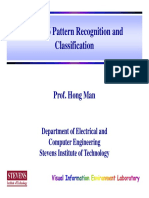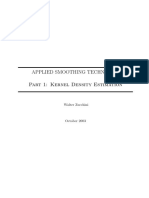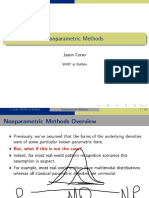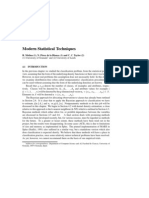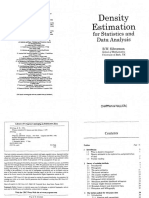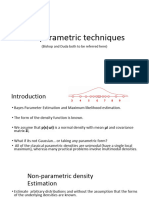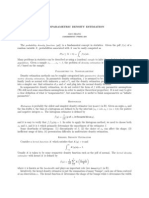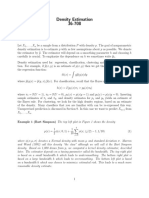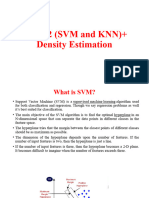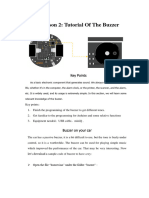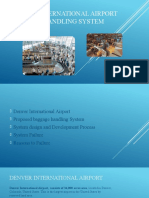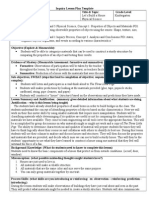0% found this document useful (0 votes)
44 views51 pagesNon-Parametric Methods
The document discusses non-parametric density estimation methods, specifically histograms and kernel density estimation. Histograms estimate density by counting observations within bins of a fixed width. Kernel density estimation uses a kernel function centered on each observation to estimate the density at any given point as the average of the kernel values. The bandwidth of the kernel determines the smoothness of the estimated density, and must be chosen to balance resolution and variability.
Uploaded by
bill.morrissonCopyright
© © All Rights Reserved
We take content rights seriously. If you suspect this is your content, claim it here.
Available Formats
Download as PPTX, PDF, TXT or read online on Scribd
0% found this document useful (0 votes)
44 views51 pagesNon-Parametric Methods
The document discusses non-parametric density estimation methods, specifically histograms and kernel density estimation. Histograms estimate density by counting observations within bins of a fixed width. Kernel density estimation uses a kernel function centered on each observation to estimate the density at any given point as the average of the kernel values. The bandwidth of the kernel determines the smoothness of the estimated density, and must be chosen to balance resolution and variability.
Uploaded by
bill.morrissonCopyright
© © All Rights Reserved
We take content rights seriously. If you suspect this is your content, claim it here.
Available Formats
Download as PPTX, PDF, TXT or read online on Scribd
/ 51
